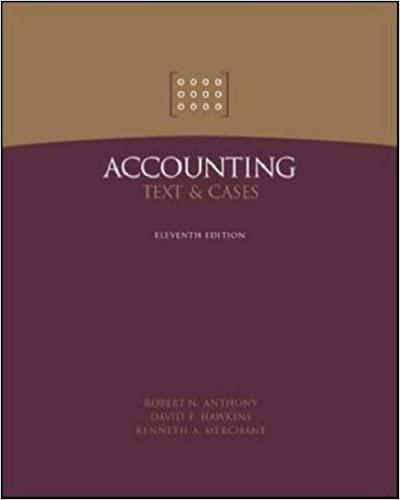Answered step by step
Verified Expert Solution
Question
1 Approved Answer
PROBLEMS Problem 1 4 - 1 ( L O 2 , 3 , 5 , 6 Admission and departure of partners under the 9 0
PROBLEMS
Problem Admission and departure of partners under the
will method. Carlton. Weber, and Stansbury share profits equally and have capital balanges
Stansbury has transferred his interest in the par the partnership, the profit and losssharing
annual salaries of $$ and
agreement was modified as follows:
a Carlton, Weber, and Laidlaw would receive amounts at the end of each calendar quarter.
$ respectively, to be withdrawn in equil we we allocated between Weber and Laidl
b A bonus of of net income after the distributed at the end of the first quarter subsequent
in the ratio of : The bonus woul
to yearend.
c Profit and loss percentages are exists, all provisions of the profitsharing
Laidlaw.
d If income is not sufficient or an operating lose percentages are used to absorb any defi
agreement are to be satisfied ciency or additional losses.
The original partners were excited about the new arrangement because Laidlaw had indi
cated that they would be able to attract a number of customers from his previous place of
employment. Weber was willing to shift some salary to a bonus status in order to captured over the first six months of
a number of Laidlaw's previous customers months were very disappointing. Not only did very few additional Laid
law customers transfer their business, but it became clear that Laidlaw was not compatible with
the other partners. Furthermore, a number of longstanding customers ceased doing business
with the company due to issues with Laidlaw. Income for the year was $ and
income for the first six months of was only $
On July Carlton and Weber agreed to acquire Laidlaw's interest in the partnership.
The transaction would be recorded as a purchase of Laidlaw's interest by the partnership under
the bonus method. Laidlaw was paid $ for their capital balance as of June and
no other distributions were made to him.
After Laidlaw left the partnership, Carlton and Weber went back to sharing profits and
losses equally with quarterly withdrawals of $ per partner at the end of each calendar
quarter. Weber agreed not to receive an additional distribution traceable to the bonus earned
during the first six months of Income in the second half of was $ However,
the partners realized that they needed to expand operations if the company was to be saved. On
January the partnership admitted Wilson. Wilson contributed tangible assets of
$ and intangibles to the partnership in exchange for a interest in capital and one
third interest in profits. The admission of Wilson was recorded using the goodwill method.
Carlton, Weber, and Wilson continued to share profits equally, and the partnership experienced
net income of $ in Quarterly withdrawals of $ were paid to each of the
partners beginning in
During the first six months of the partnership had net income of $ in spite of Carlton's reduced invlovement due to health problems. On July Carlton sold his interest to partnership for $ The sale was recorede by recognizing the goodwill traceable to the entire partnership.
prepare a schedule analyzing the change in partnerships' capital accounts since December Supporting calculations should be in good form.

Step by Step Solution
There are 3 Steps involved in it
Step: 1

Get Instant Access to Expert-Tailored Solutions
See step-by-step solutions with expert insights and AI powered tools for academic success
Step: 2

Step: 3

Ace Your Homework with AI
Get the answers you need in no time with our AI-driven, step-by-step assistance
Get Started


